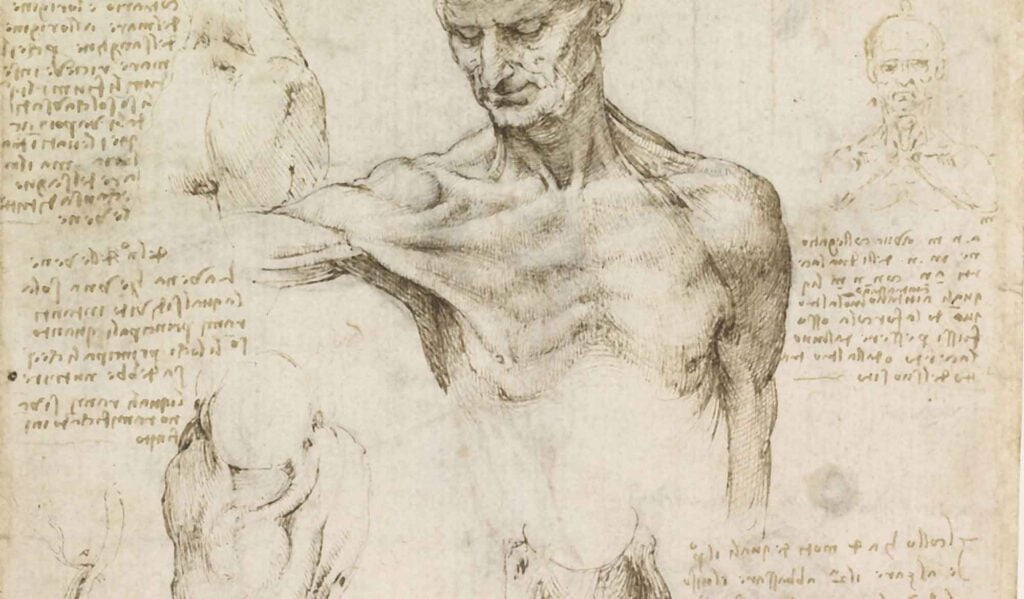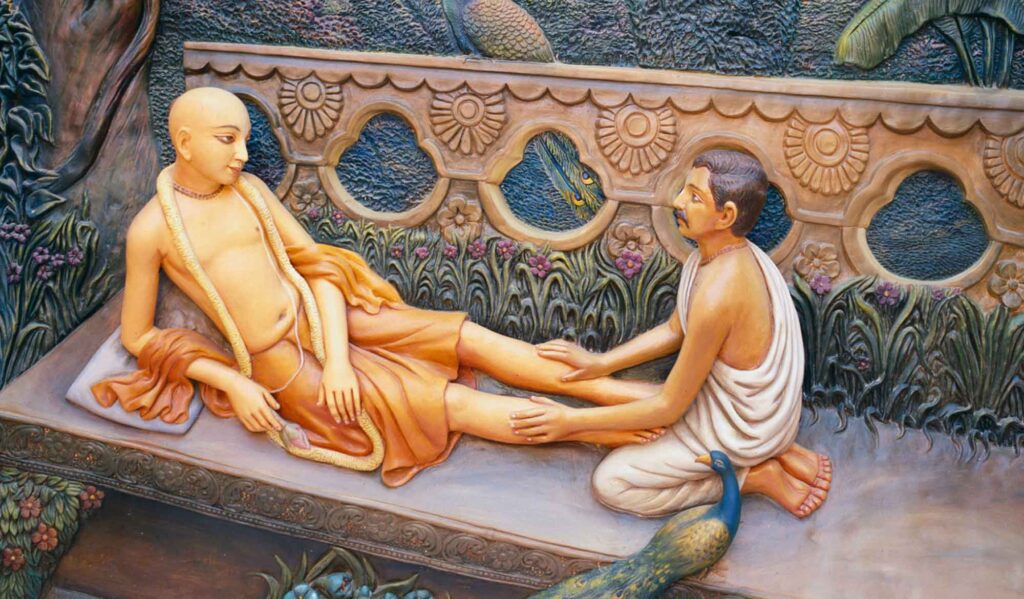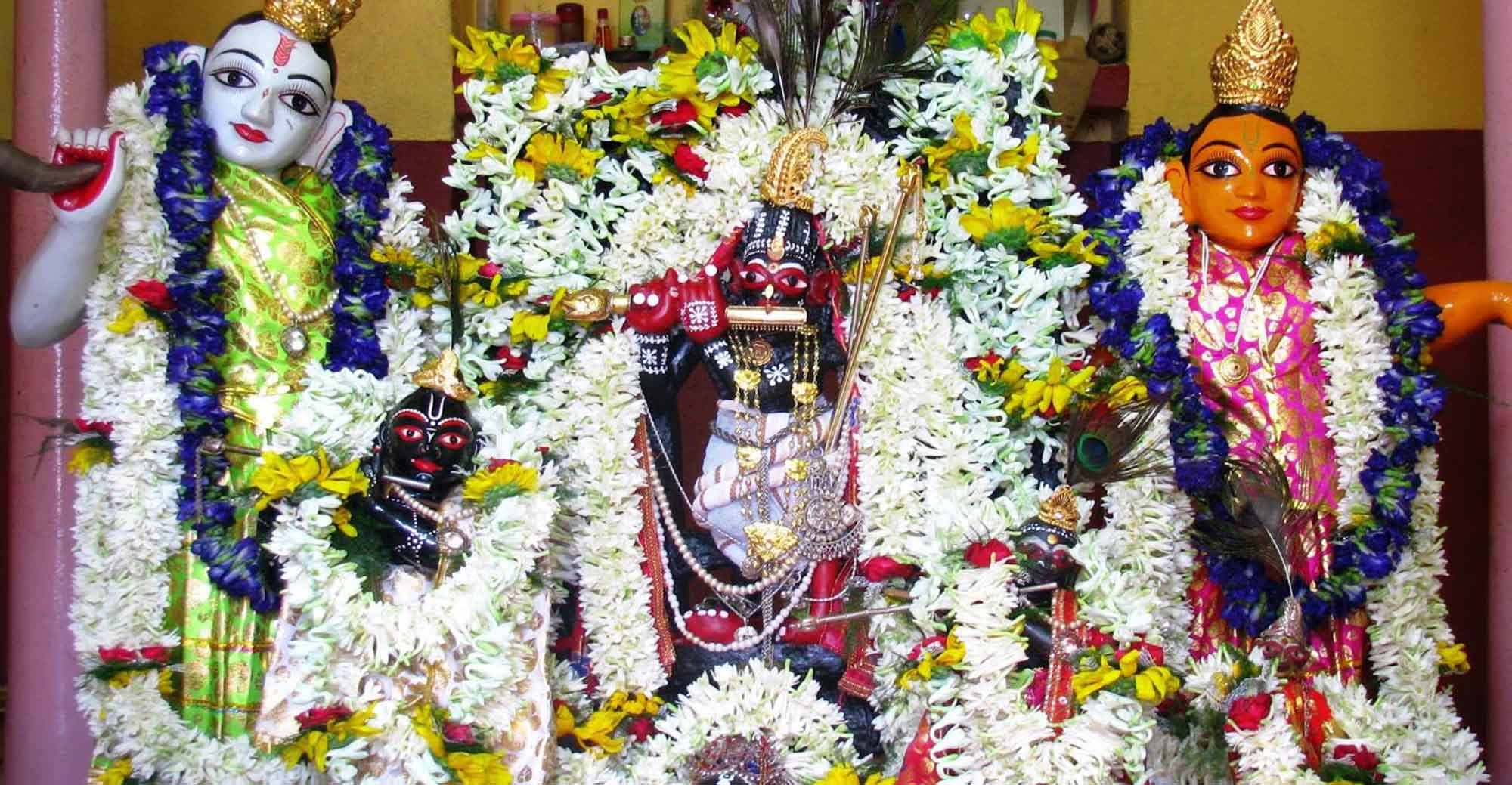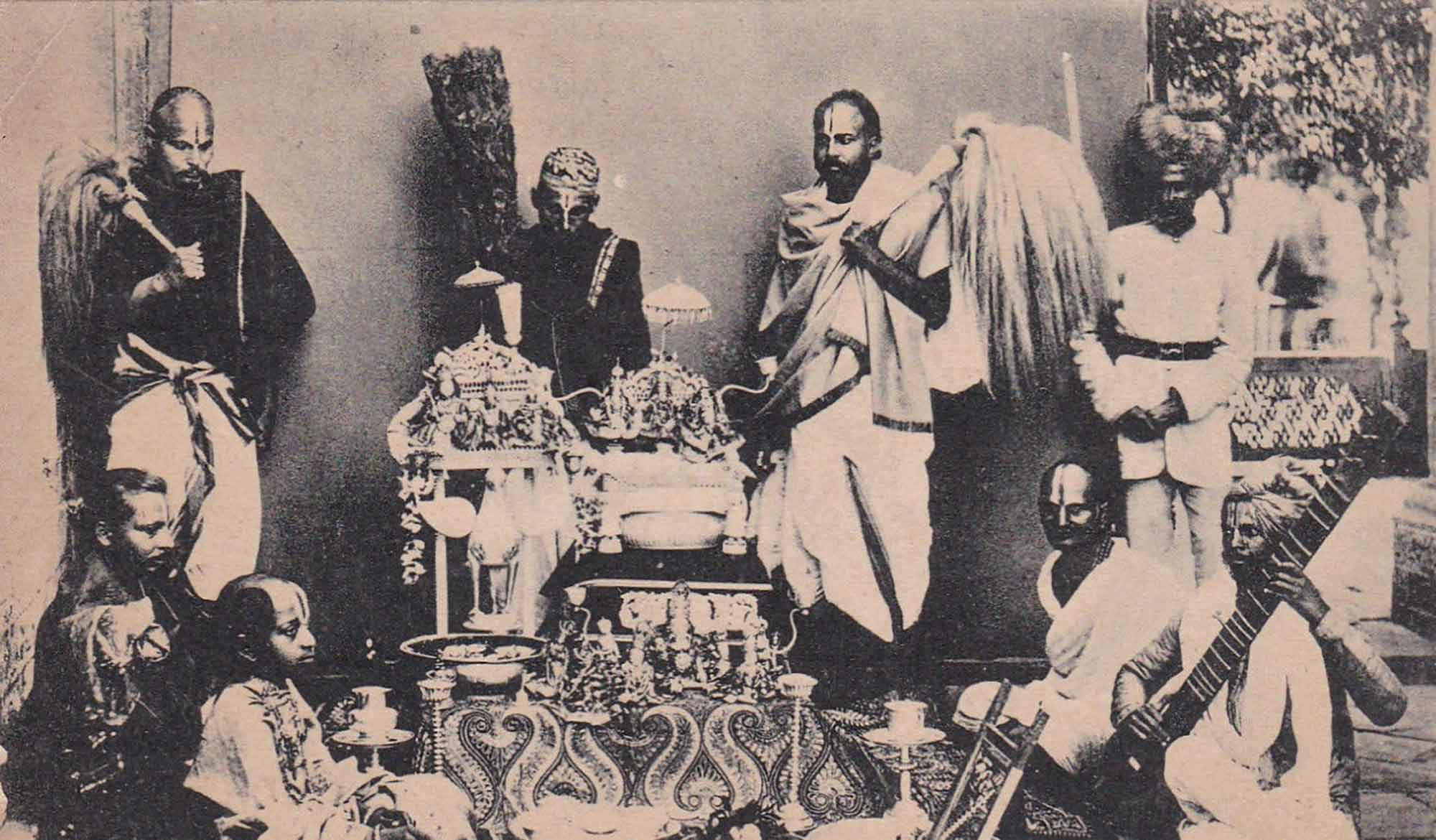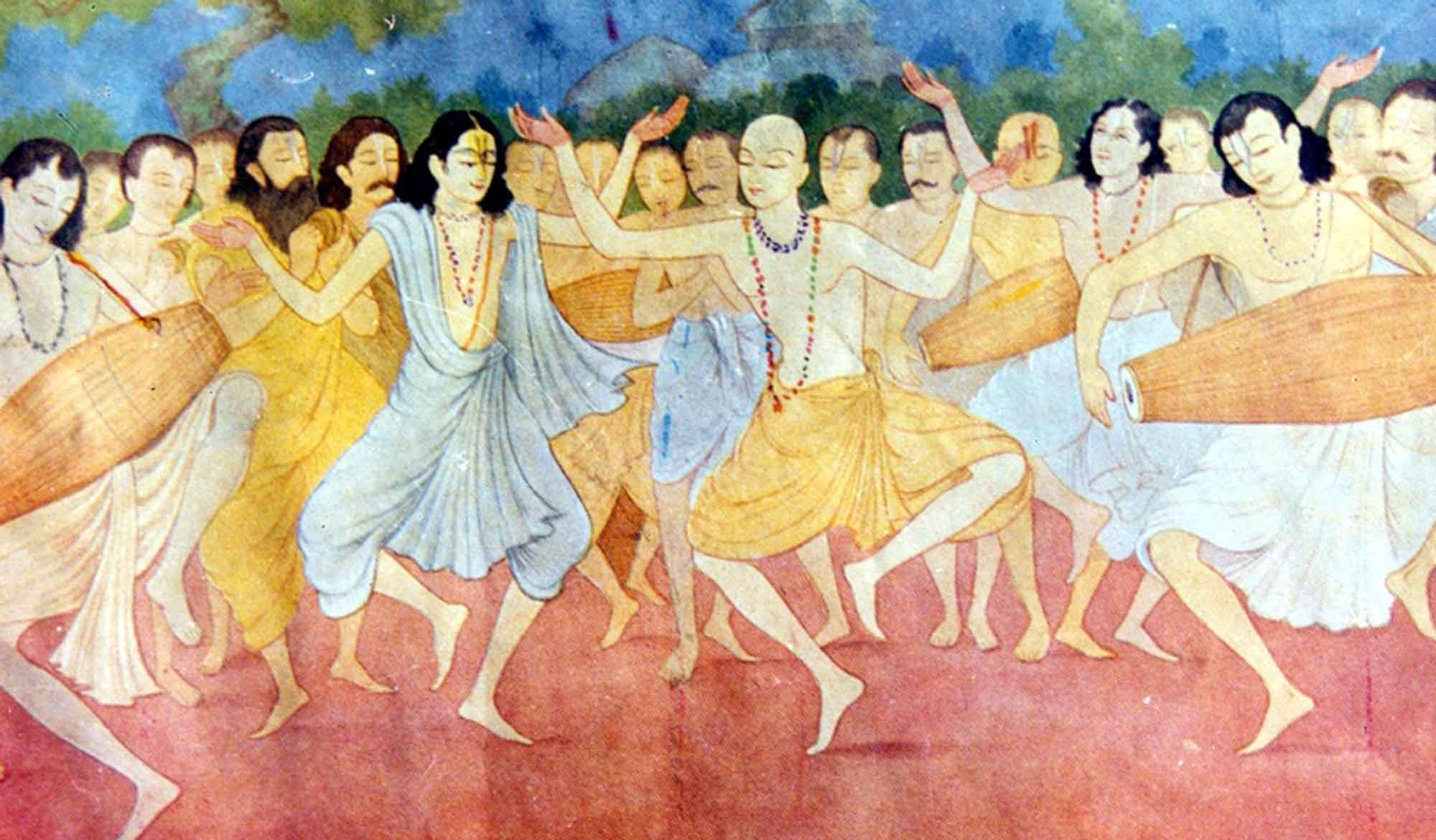Overview
In this article, "Brāhmaṇatva o Vaiṣṇavatva (Brāhmaṇism and Vaiṣṇavism)", from Sajjana Toṣaṇī Vol. 4, Bhaktivinoda Ṭhākura explains the unique relationship between Brāhmanism and Vaiṣṇavism, and how these two things are interdependent.
(translated by Swami B.V. Giri)
Many people think that Brāhmanism and Vaiṣṇavism are two different things. Due to this belief, some foolish persons that are partial towards Vaiṣṇavism condemn Brāhmanism. Some, who are partial to Brāhmanism, condemn the Vaiṣṇavism. Persons who understand the śāstra do not accept this. They say that Brāhmanism is a qualification or a step towards Vaiṣṇavism, and that Vaiṣṇavism is the result of Brāhmanism. Śrīman Mahāprabhu has said:
sahaje nirmala ei `brāhmaṇa’-hṛdaya
kṛṣṇera vasite ei yogya-sthāna haya
`mātsarya’-caṇḍāla kene ihāṅ vasāile
parama pavitra sthāna apavitra kaile
The heart of a brāhmaṇa is naturally very pure and thus it is a proper place for Kṛṣṇa to sit. Why have you allowed the caṇḍāla of envy to sit there also? You have contaminated a most pure place. (Cc. Madhya-līlā 15.274)
The pure heart of a jīva is called Brāhmanism. Kṛṣṇa-bhakti resides in such a pure heart. If the caṇḍāla of envy captures that place, then kṛṣṇa-bhakti disappears from there. Then such a person no longer has any Brāhmanism. To feel distress upon seeing another’s happiness, and to feel pleasure by seeing another’s distress is known as envy. Envy and love (prema) are the opposite of each other. Wherever there is envy, there is no love. Wherever there is love, there is no envy. A heart that is devoid of envy is the only identification of a brāhmaṇa. It is certainly the land of love. The Śrīmad Bhāgavata describes the symptoms of Brāhmanism.
śamo damas tapaḥ śaucaṁ santoṣaḥ kṣāntir ārjavam
jñānaṁ dayācyutātmatvaṁ satyaṁ ca brahma-lakṣaṇam
(Bhāg.7.11.21)
A brāhmaṇa should possess these eleven symptoms. Anyone who does not possess peacefulness, self-control, austerity, purity, satisfaction, forgiveness, simplicity, knowledge, compassion, and bhakti towards Acyuta cannot be called a brāhmaṇa. Kṛṣṇa-tattva always shines brightly within the heart of a brāhmaṇa who has such qualities. Thus one who does not have kṛṣṇa-bhakti has no Brāhmanism. Nārada has said:
yasya yal lakṣaṇaṁ proktaṁ puṁso varṇābhivyañjakam
yad anyatrāpi dṛṣyeta tat tenaiva vinirdiśet
(Bhāg.7.11.35)
In his commentary on this śloka, Śrī Śrīdhara Svāmī Mahāśaya has said: śamādibhir eva brāhmaṇādi vyavahāro mukhyaḥ, na jāti mātrād ity āha—yasyeti. yad yadi anyatra varṇāntare ‘pi dṛṣyeta tad varṇāntaraṁ tenaiva lakṣaṇa nimittenaiva varṇena vinirddiśet, na tu jāti nimittenety arthaḥ.
If we carefully look at the statements of all the spiritual śāstra and smṛti, such as Manu–saṁhitā, which help maintain life in this world, then we understand that there are two kinds of brāhmaṇas, namely the ordinary brāhmaṇa and the spiritual brāhmaṇa. Ordinary Brāhmanism is only based on caste, and spiritual Brāhmanism is based on qualities. The symptoms of a spiritual brāhmaṇa are given in the Bṛhad-āraṇyaka:
etad akṣaraṁ gārgy aviditvāsmāl lokāt praiti sa kṛpaṇaḥ
atha ya etad akṣaraṁ gārgi viditvāsmāl lokāt praiti sa brāhmaṇaḥ
(Bṛhad-āraṇyaka Upaniṣad 3.9.10)
There are ten types of ordinary activities such as funeral rites etc. All these things are prescribed for the prestige of the ordinary brāhmaṇas and are written about in the smṛti literature. Dīkṣā, (accepting initiation), upāsana (deity worship), sannyāsa (accepting the renounced order) and vratas (vows) etc. that help in bhajana are the ways in which a spiritual brāhmaṇa is honoured. If one does not achieve spiritual Brāhmanism, one cannot achieve the platform of Vaiṣṇavism.
In this regard, the Bṛhad-āraṇyaka says
tam eva dhīro vijñāya prajñāṁ kurvīta brāhmaṇaḥ
(Bṛhad-āraṇyaka Upaniṣad 4.4.21)
A wise brāhmaṇa should desire knowledge of the relationship between cit (spirit), acit (matter) and īśvara (the Supreme), which means he must cultivate śuddha-bhakti (pure devotion).
After considering this siddhānta found in all the śāstra, we can certainly understand that there is no difference between advanced Brāhmanism and Vaiṣṇavism. When one achieves Brāhmanism, faith is awakened, his life becomes perfect and he attains bhakti.
Many see examples of Jaḍa Bharata and others and doubt whether someone from a lower varṇa who performs bhakti must be born in a brāhmaṇa family in order to achieve the highest result. In this regard, we can always observe the following conclusive statements of Śrī Bhagavad–gītā:
māṁ hi pārtha vyapāśritya ye ‘pi syuḥ pāpa-yonayaḥ
striyo vaiśyās tathā śūdrās te ‘pi yānti parāṁ gatiṁ
kiṁ punar brāhmaṇāḥ puṇyā bhaktā rājarṣayas tathā
anityam asukhaṁ lokam imaṁ prāpya bhajasva mām
(Gīta 9.31-32)
Is there any doubt that if strong bhakti awakens in the hearts of brāhmaṇas and kṣatriyas that such jīvas will be delivered? Because even women, vaiśyas, śūdras, outcastes, and immoral caṇḍālas etc. who have taken birth in unrighteous wombs can all attain the supreme destination by taking shelter of śuddha-bhakti.
If one understands the meaning of the following two Bhagavad-gītā ślokas directly preceding those quoted previously, then one will have no doubts whatsoever.
api cet su-durācāro bhajate mām ananya-bhāk
sādhur eva sa mantavyaḥ samyag vyavasito hi saḥ
kṣipraṁ bhavati dharmātmā śaśvac-chāntiṁ nigacchati
kaunteya pratijānīhi na me bhaktaḥ praṇaśyati
The meaning of these two ślokas is that generally jīvas who become devotees or Vaiṣṇavas are endowed with Brāhmanism. If by the strength of sādhu-saṅga a person attains unalloyed bhakti before possessing the wealth of Brāhmanism, then he should also be accepted as a sādhu. Because by My mercy, very soon he will become dharmātmā (a pious person). In other words, Brāhmanism, which is the qualification of a devotee, is attained by him as an accompanying result of bhakti. O Kaunteya! Such a person can never fall down in the form of rebirth, etc. and this is My promise. I will award prema by giving him pure spiritual Brāhmanism in this lifetime, without him having to undergo prāyaścitta (atonement).
O readers, do not differentiate between Brāhmanism and Vaiṣṇavism. Brāhmaṇas are naturally qualified to accept Vaiṣṇava dharma. That is why Śrī Kṛṣṇa Himself has displayed so much respect for those brāhmaṇas who are qualified for pure bhakti. If we receive completely the exclusive mercy of the brāhmaṇas, we can become pure. No one can become a Vaiṣṇava by disregarding Brāhmanism, and a brāhmaṇa can never attain success by disregarding Vaiṣṇavism.
Thus, let the instructions pertaining to the natural respect between the brāhmaṇas and Vaiṣṇavas be preached throughout the whole world. Do not allow a mood of selfishness and foolishness to enter between them and create enmity. In order to show respect for the brāhmaṇas of this world, Śrīman Mahāprabhu enacted the līlā of curing His fever by drinking the caranāmṛta of a brāhmaṇa. O brāhmaṇas, kindly be merciful unto us.

